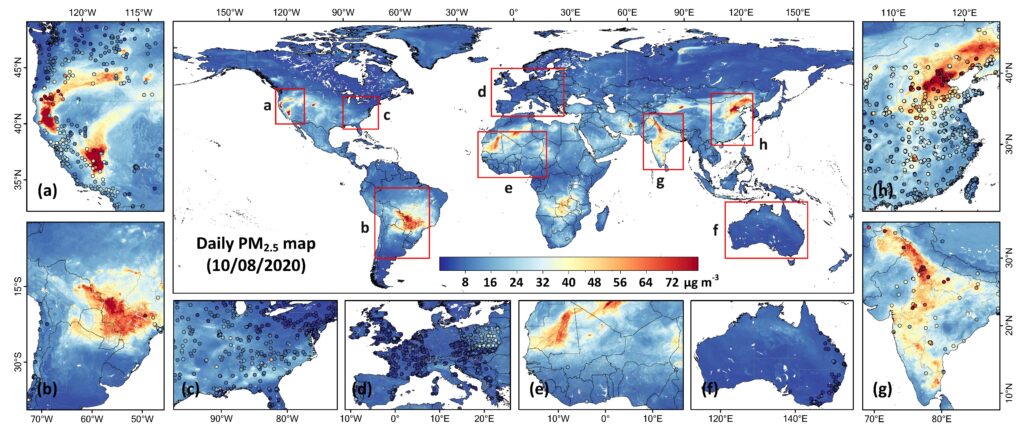
University of Maryland researchers have developed the world’s first daily 1-kilometer seamless product of PM2.5— fine particulate matter that threatens human respiratory health — that logs the progression of the world’s air quality since 2017.
Published today in Nature Communications, the study was led by Jing Wei and Zhanqing Li from the University of Maryland’s Earth System Science Interdisciplinary Center (ESSIC) and Department of Atmospheric and Oceanic Science (AOSC), as well as international collaborators. The product, developed using advanced machine learning models and big data, reveals detailed spatiotemporal distribution of air pollutants worldwide on a daily basis with dramatic changes associated with anthropogenic and natural events.
The researchers found that around the world, 53% of human-habitated areas were exposed to unhealthy air for at least one month of the studied period, with 96% and 82% of areas experiencing unhealthy air for one day or one week respectively. The top twenty most polluted countries were in North Africa, the Middle East, and South and East Asia, with Kuwait, Pakistan, India, and China topping the lists. However, drastic improvement has taken place in China, with PM2.5 levels reducing by 30% in the last few years.
Risk of exposure to PM2.5 varies between developed and developing countries, urban and rural areas, and within cities at a neighborhood level. Natural disasters such as biomass burning also have strong impacts on regional air quality, and in some countries becoming the top cause of bad air quality. During strong El Niño years such as in 2020, PM2.5 jumps 224% the normal level in the United States, becoming more deadly than fires.
Dramatic changes in air quality are clearly seen around the world before, during, and after the COVID-19 lockdowns, as is the mortality burden linked to fluctuating air pollution events. Encouragingly, only approximately a third of all countries return to pre-pandemic pollution levels.
These findings are valuable for air quality monitoring, climate change, and public health studies, providing crucial scientific evidence for future air pollution prevention and control, especially in small to medium scales and urban areas. It allows for a detailed assessment of the spatial non-uniformity and variations of pollution within major cities and evaluates associated health risks, providing scientific foundation for environmental justice.
To access the study, click here: “First close insight into global daily gapless 1 km PM2.5 pollution, variability, and health impact”.





